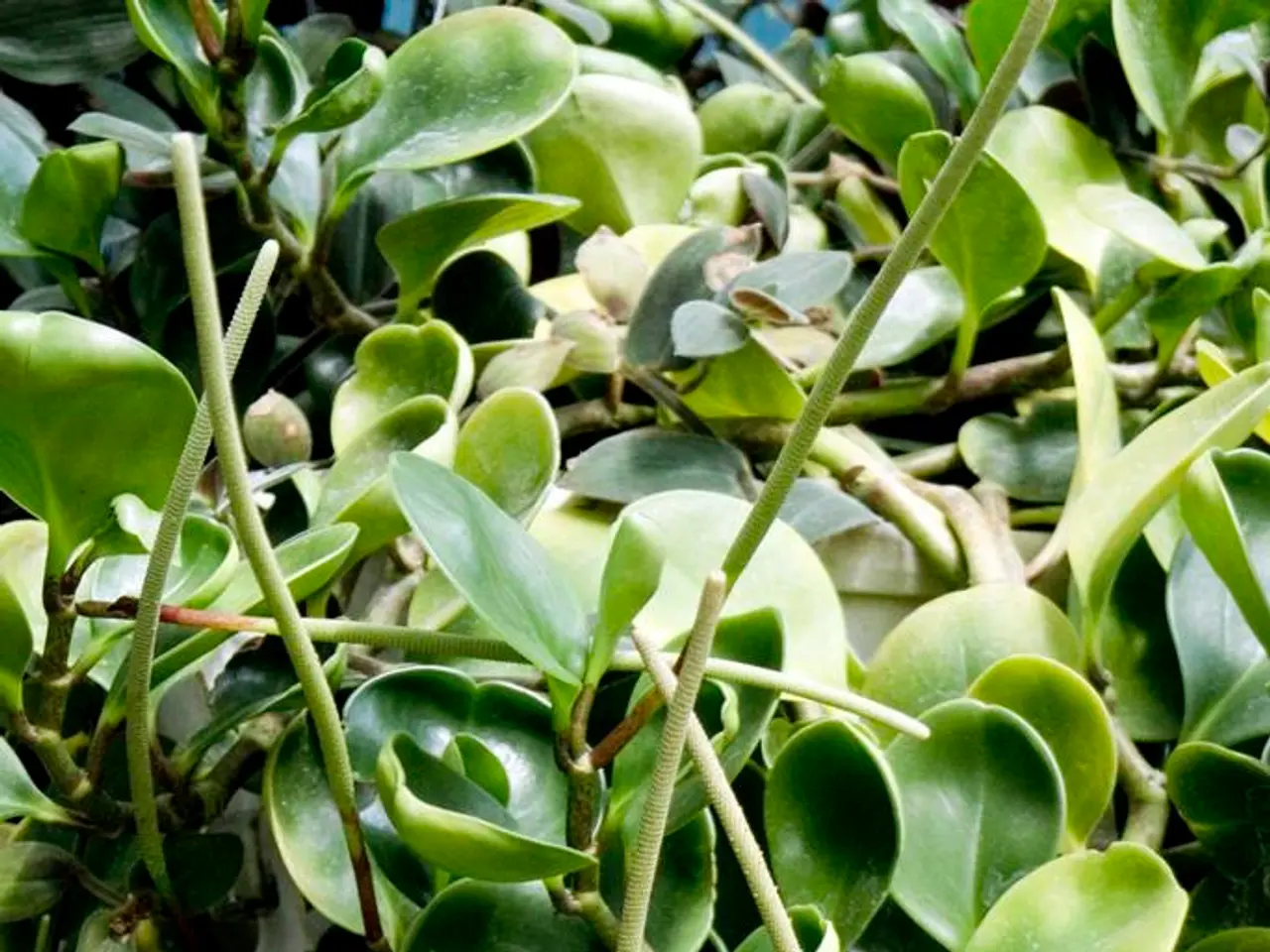Properly Irrigating a Terrarium: Insider Tips
In the fascinating world of terrariums, knowing how to water your little green haven correctly is crucial for its survival and thriving. Here's a guide to help you find the optimal watering frequency for your terrarium, ensuring a healthy and vibrant ecosystem.
Firstly, it's essential to understand that watering a terrarium is about evenly saturating the substrate, leaving no area sodden, and no standing water on top or below the substrate layer. Misting is recommended for watering a terrarium using a water bottle with a spray function or a mister/atomizer.
The type of terrarium you have (closed vs. open) plays a significant role in determining the watering frequency. Closed terrariums, which retain moisture, require less frequent watering; water only when the soil just begins to dry out. On the other hand, open terrariums need more frequent watering due to higher evaporation.
Regularly checking the soil moisture by touching the top layer is another crucial factor. Water only when the topsoil starts to feel dry, not on a fixed schedule alone. For many indoor plants, watering every 5–10 days is typical, but terrariums vary with humidity and plant type.
Different plants have varying preferences. For example, tropical plants like ferns prefer consistent moisture, while succulents prefer drier conditions. Tailor watering to the specific plants inside your terrarium.
Maintaining humidity is also vital, especially in tropical terrariums. Misting is recommended, but avoid overwatering to prevent mold; occasionally open the lid for air circulation in closed terrariums.
Season and climate also impact watering frequency. In warmer, brighter conditions, terrarium plants may need more frequent watering. In cooler months or less light, reduce watering accordingly.
Practical steps to determine the optimal watering frequency include checking soil moisture every few days, watering lightly when soil dries on the surface but not completely dried out inside, observing plant signs (wilting, leaf curl) to adjust watering, using a well-draining soil mix to prevent waterlogging, and adjusting frequency seasonally and based on terrarium type and location.
In summary, optimal watering depends on terrarium type, plant species, soil moisture, and environment. Typically, water only when the topsoil feels dry and adjust frequency based on conditions, using moisture checks and plant health as your main guides. A closed terrarium may need to be topped up with water every couple of months, and the substrate should never be dry. Every terrarium should have a substrate with high water retention and good drainage. Some plants are more sensitive to watering than others, such as Fittonia plants. A terrarium should not be constantly opened for watering to allow it to settle into a healthy water cycle. Water straight from the tap isn't ideal for terrariums due to the presence of chlorine and salts; letting tap water sit for 24 hours can help evaporate off the chlorine. The frequency of watering a terrarium depends on the terrarium size, materials, plants, and environmental conditions. To test the moisture level of the substrate, one can feel it or check the condensation levels against the glass through the substrate level. Deionized water, sold for use in car batteries, is a cheaper alternative to reverse osmosis and distilled water and can be used for terrariums. There is no single-fit watering schedule for terrariums; the watering frequency depends on the specific needs of the individual plants in the terrarium. An evenly moist substrate will show beads of condensation throughout the whole layer, while no visible condensation throughout the top of the terrarium is a strong sign of little to no humidity and likely insufficient water in the system as a whole.
In the realm of home-and-garden activities, maintaining a vibrant and balanced mini-ecosystem in your terrarium requires paying attention to your lifestyle, especially the watering habits for your terrarium. Closed terrariums, being moisture-retaining, necessitate less frequent watering, typically when the soil's top layer starts to feel dry, compared to open terrariums that need more frequent watering due to higher evaporation.




